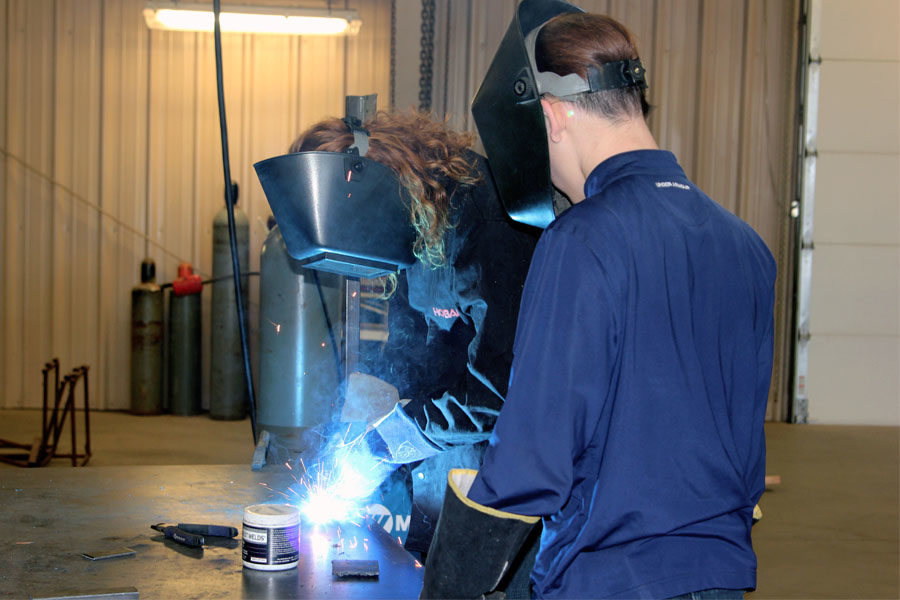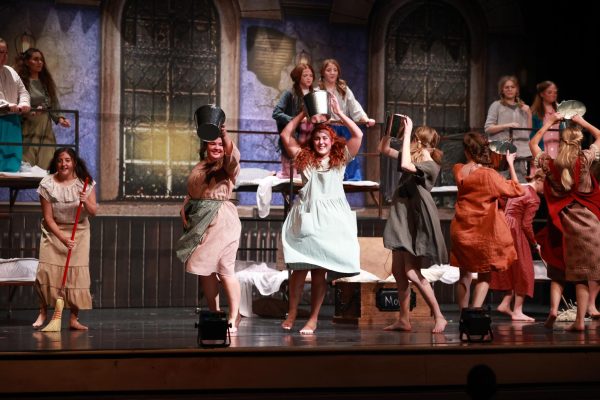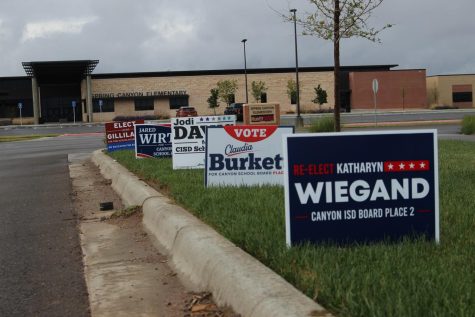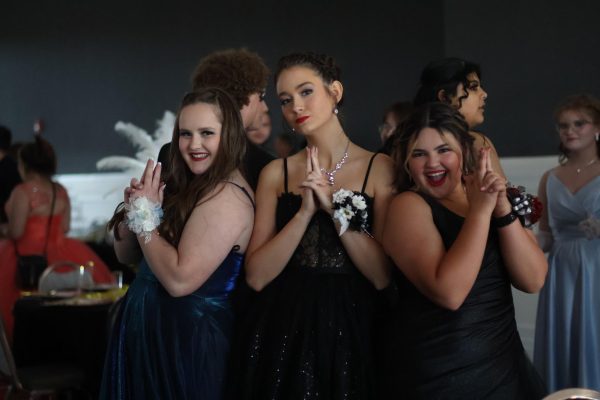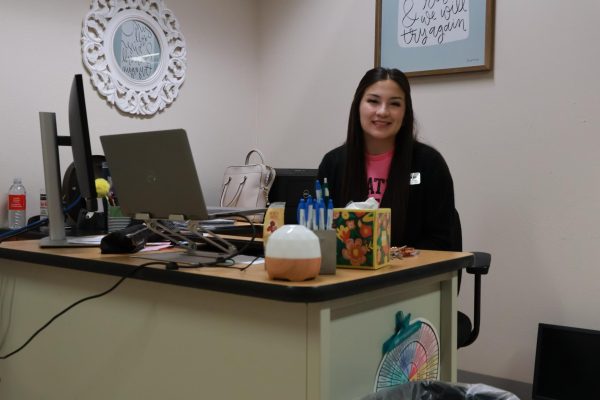Manufacturing academy offers welding, workforce preparation
Sophomores Cade Rhodes and Roy Short weld together.
Chase Fulton was once in high school learning welding under Marc Nolan.
“He took me to all the major shows. Anywhere we went, he introduced me to some important people in the industry and showed me the things they do. If he could do that for my life, I wanted to do that for someone else.”
Now, the manufacturing academy coordinator works in his own classroom, nicknamed “The Fishbowl” for its many windows. His 93 students filter in and out each time the bell rings, always one step closer to certification with each passing day. Once a week, he talks with his old teacher, teaching as Nolan did.
Starting this year, students can earn OSHA welding certifications through high school classes and compete on the welding team.
“We’re taking a two-year program and teaching high school kids the skills they need to step out after high school to make them very usable in the industrial side of the workforce,” Fulton said. “With this being the first year, we just have Intro to Welding, a one-period class. We teach them how to weld and get them certified. Next year, we’ll have Diversified Manufacturing, a two class period program.”
The team will travel to San Antonio Feb. 22 for its first competition.
“The purpose of the welding program is to get kids in to start welding and eventually create some new jobs for welders, since you can get your certification in class,” sophomore and welding team member Greysen Culwell said. “I’ve connected with a lot of supervisors from welding colleges that will really help me in the future. Mr. Fulton has helped me tremendously with not only learning the skill of welding, but also critiquing and helping me to be who I am today.”
If you don’t try to make a relationship with the kid, whatever you know isn’t going to transfer over as well.
— Chase Fulton, teacher
Fulton said he worries about the best way to teach a concept.
“I don’t always realize people don’t have a background in welding,” Fulton said. “I’ll teach something, and I’ll look at the class, and the whole class will be glazed over. I have to go back and simplify what I said and hope it makes sense.”
Although he said he did not plan on attending college after high school, Fulton majored in agricultural education at West Texas A&M University.
“I was told in college, ‘Students don’t care how much you know until they know how much you care,’” Fulton said. “Now that I’m teaching, it really shows that if you don’t try to make a relationship with the kid, whatever you know isn’t going to transfer over as well. That’s a big part of my teaching philosophy.”
Culwell said welding is a great way to learn new things.
“There are a lot of ways to expand your skills through welding,” Culwell said. “With any hard work in general, you learn how to get your hands dirty. To see a project come out of your work is so satisfying.”

Hullo! I'm a senior in my third year on staff and my second year as an editor-in-chief. You can catch most of my work in the news and blogs sections. When I'm not around the school with a camera and a press pass, I spend my time in choir, musical, various...

